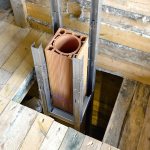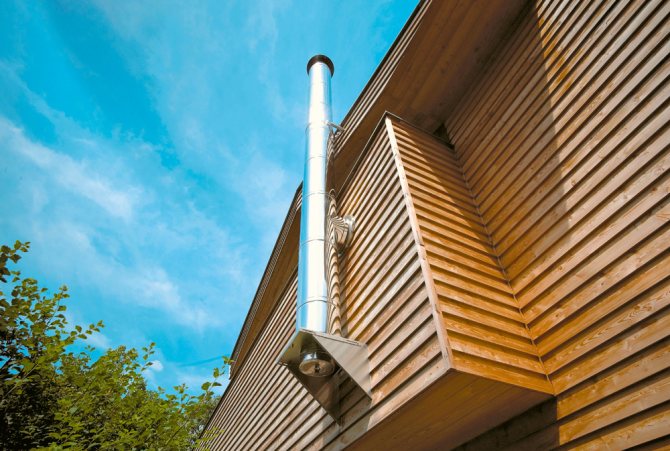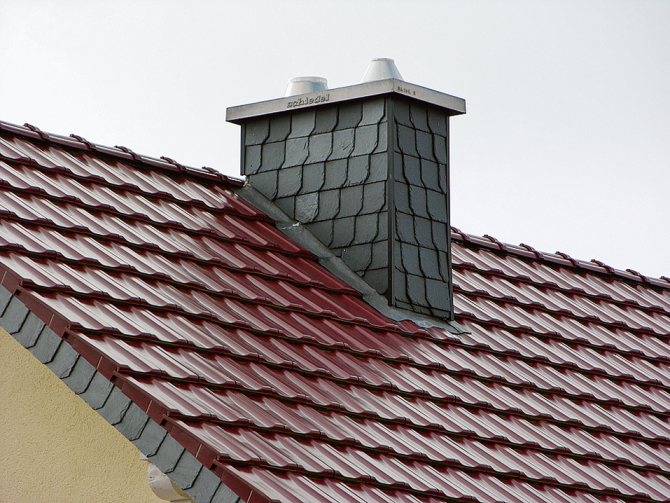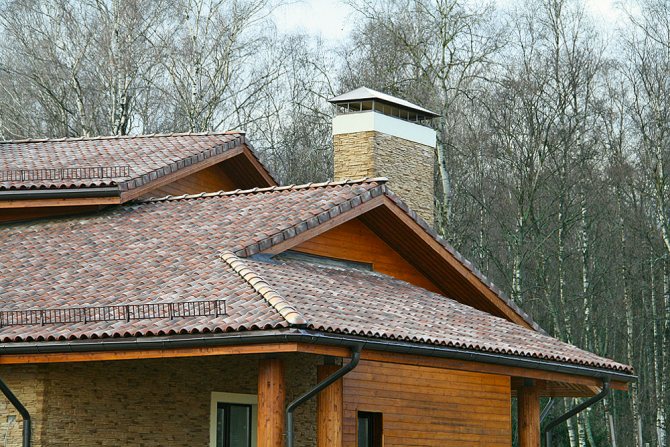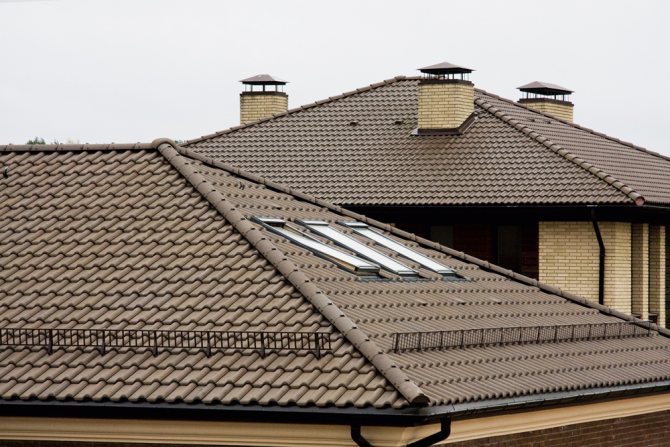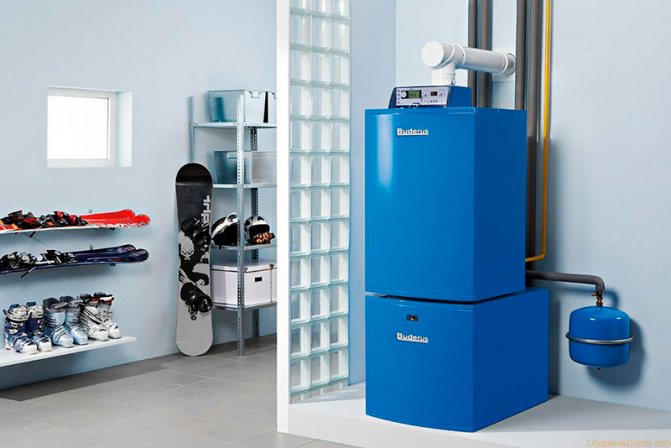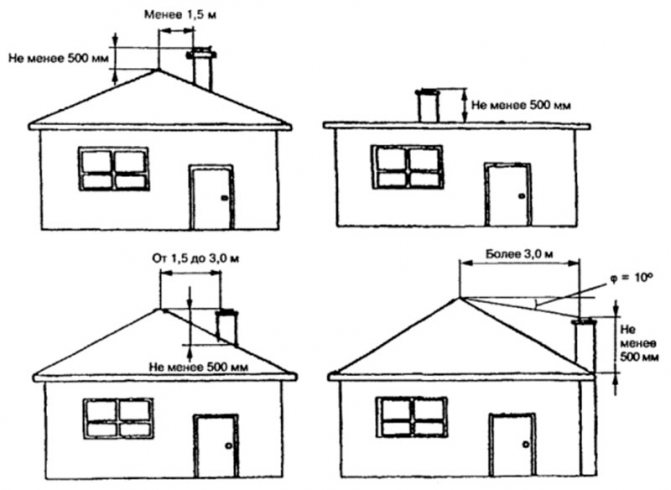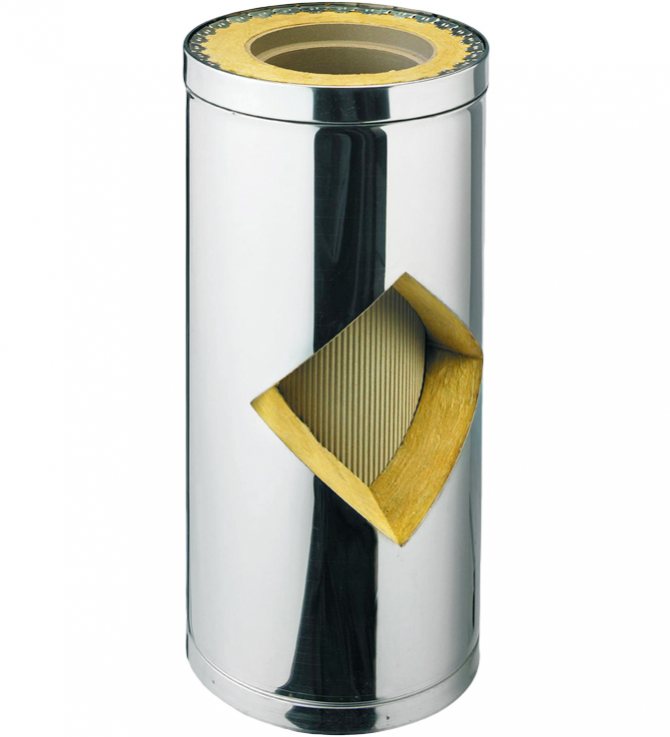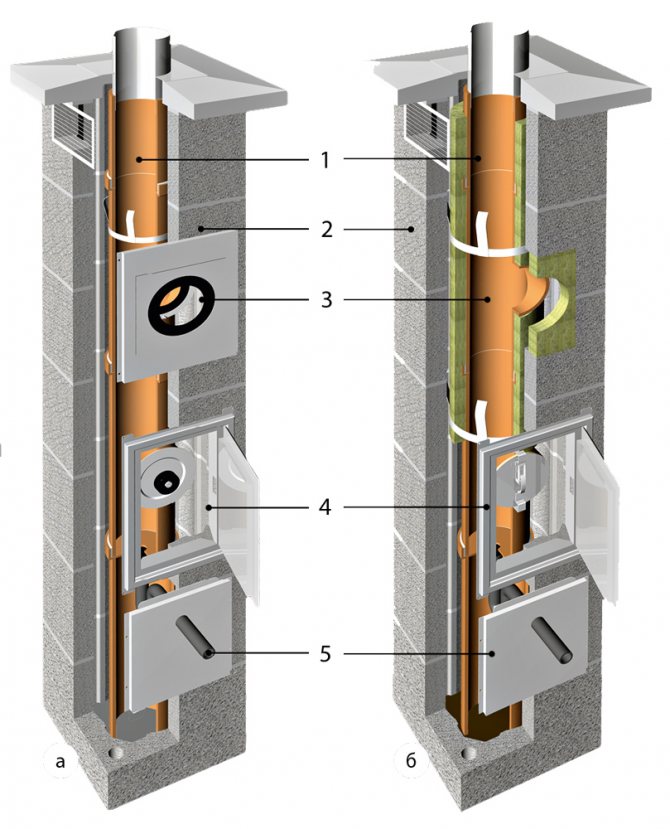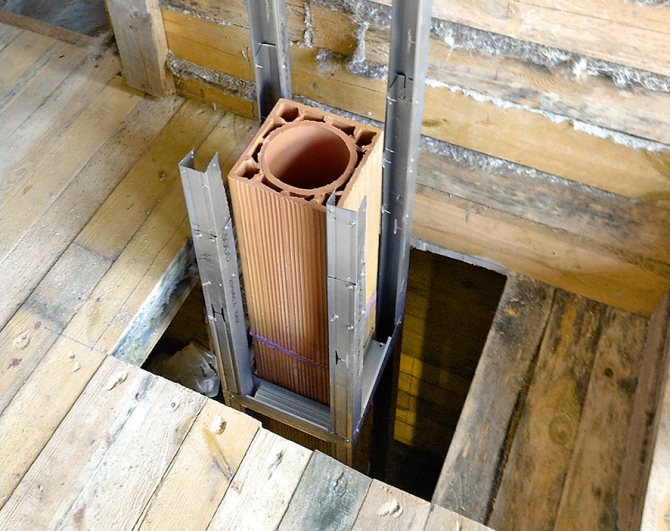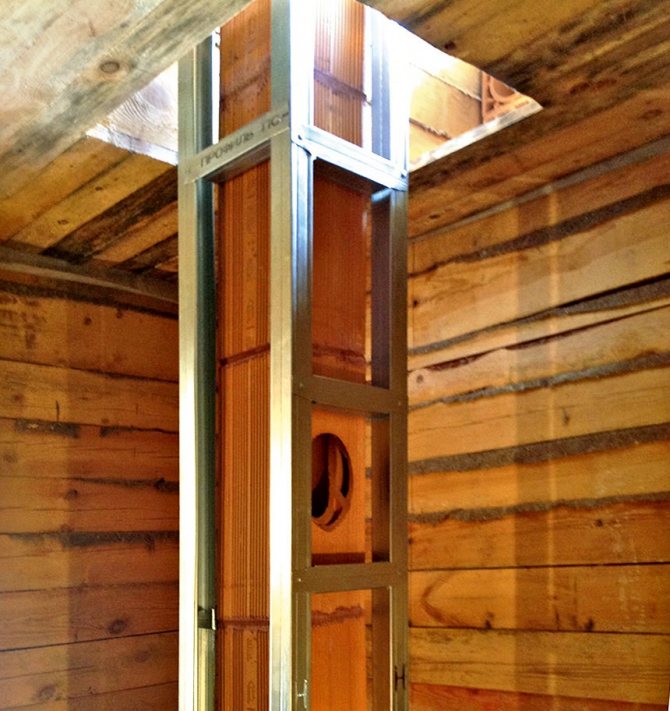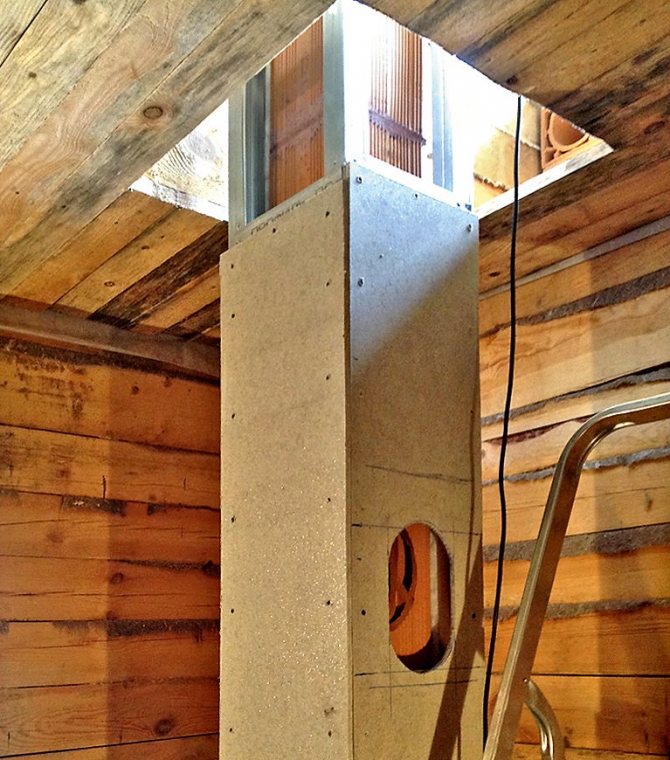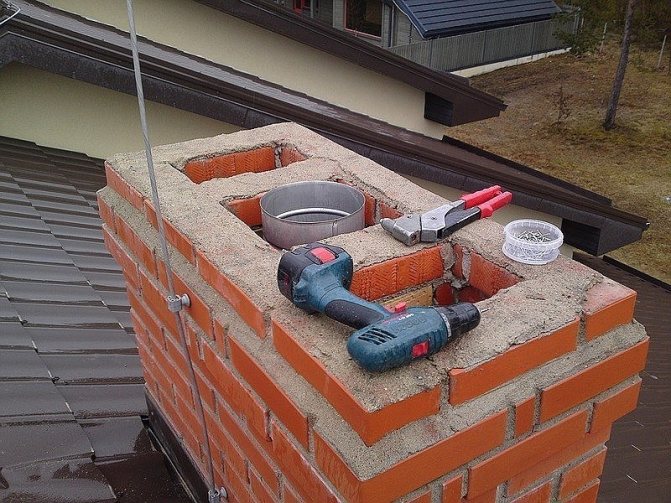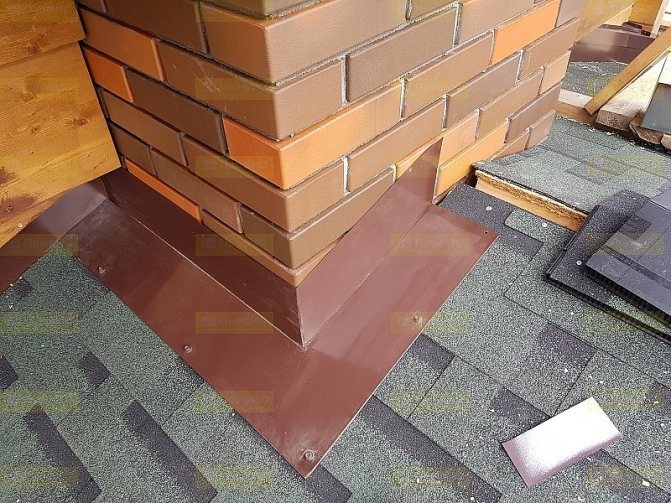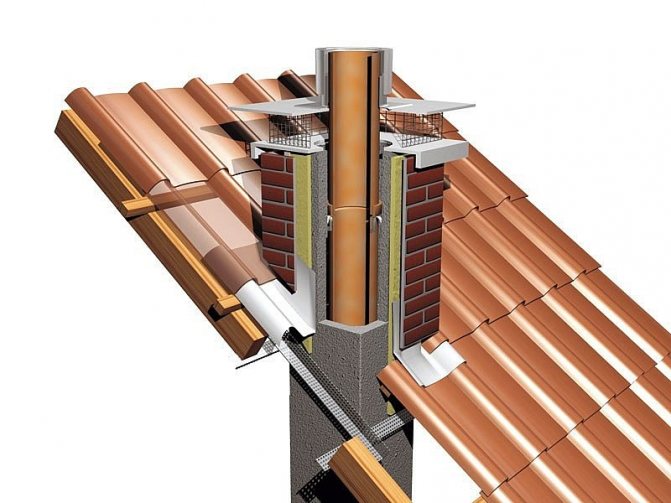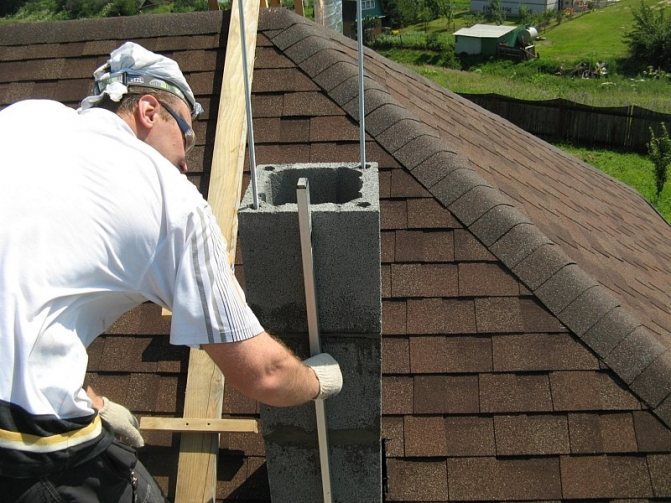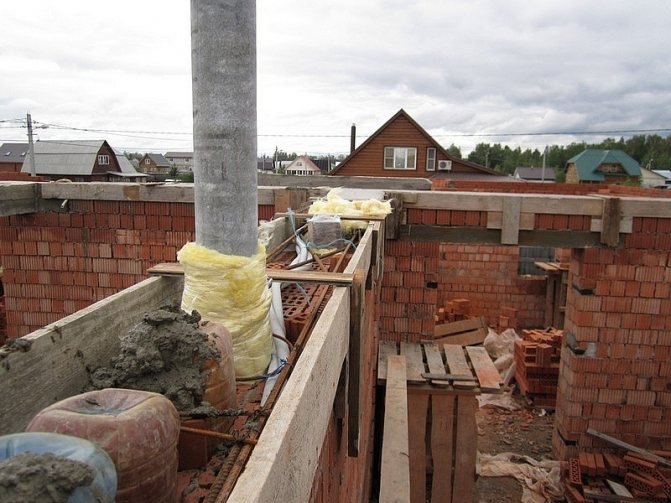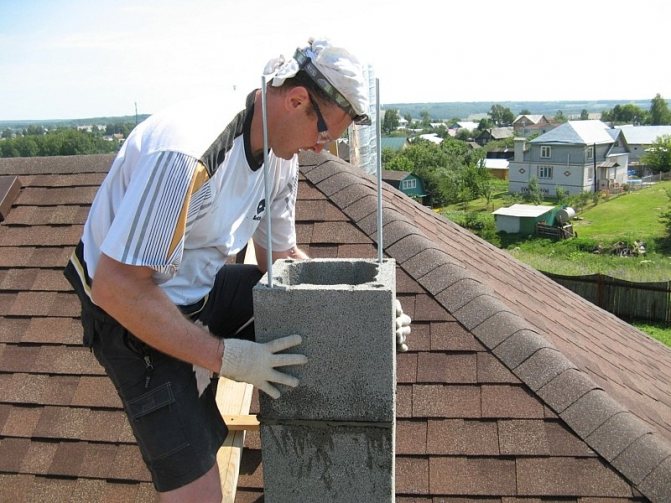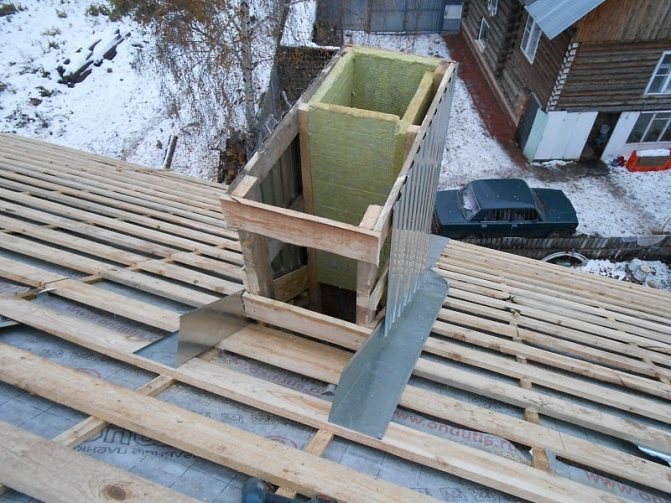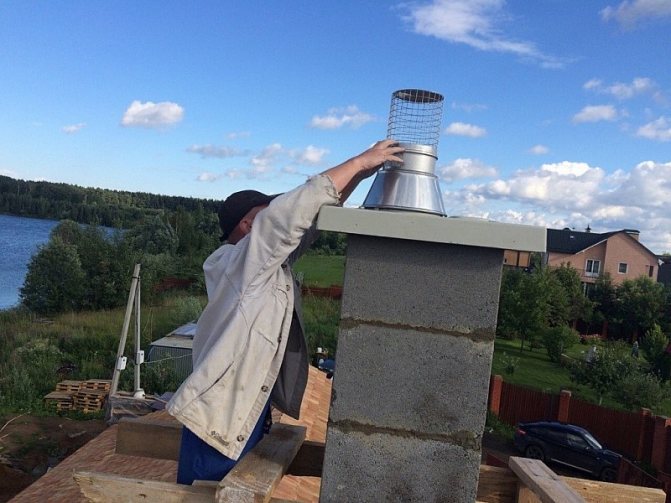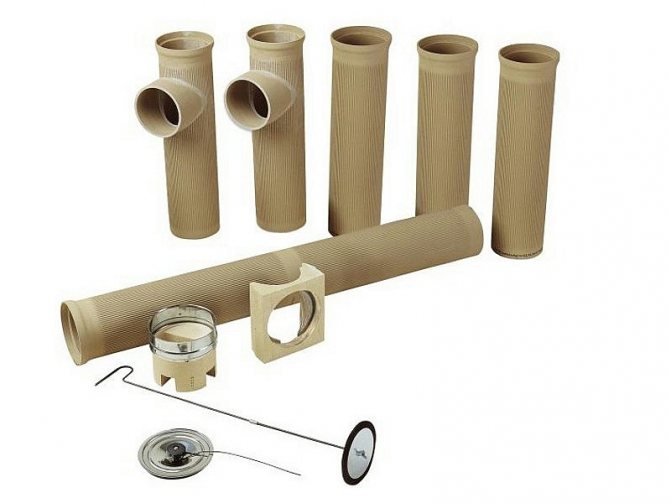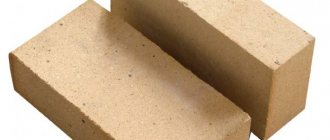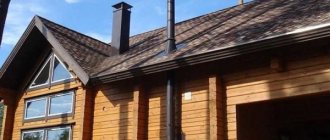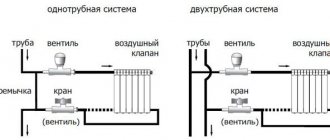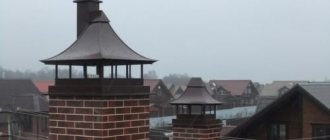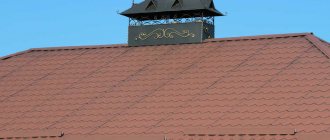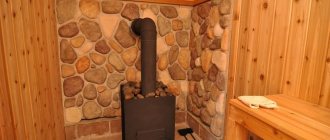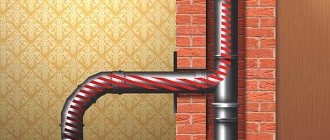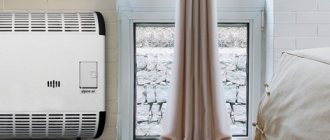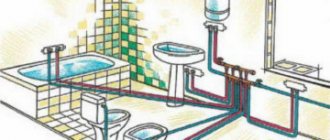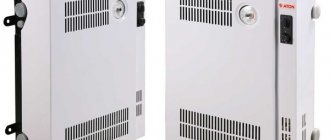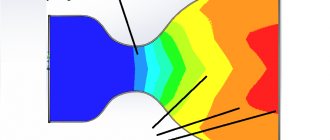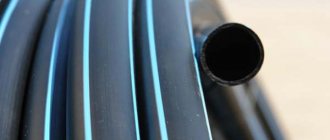Now it makes no sense to convince homeowners of the inefficiency and danger of brick chimneys. After all, it has long been clear that even existing systems need to be cased or changed to something modern. One of the brightest representatives in this category are metal and ceramic chimneys in the form of composite or modular structures.
Steel pipes, including double-walled ones with insulation, are known to the modern consumer, but ceramic chimneys are a novelty for most. Until recently, ceramics were one of the business cards of elite houses, but recently it has been gaining popularity among ordinary people, which can be called a rather strange phenomenon. Judge for yourself - it has a fairly affordable price, while there are more advantages than a brick.
Few people know, but the arrangement of chimneys by means of hollow chamotte rods was started by French builders in the early 80s. Several years later, this technology has become popular throughout the Western world. It came to Russian consumers only at the end of the 90s.
- 2 Pros and cons
- 3 The use of ceramic chimneys for baths and fireplaces
- 4 Ceramic chimneys of Russian production
Ceramic chimney device
The ceramic chimney, as already mentioned, is a composite structure that includes:
- ceramic chimney;
- insulation layer or air gap;
- outer layer of expanded clay concrete.
Such a serious design is due to a number of factors. First, the ceramic pipe that forms the chimney is very fragile and needs support. Secondly, it has a high thermal conductivity, which is why it requires reliable thermal insulation.
The pipe itself is made of circular cross-section, with a length of 30 cm to 1 m. Its inner walls are smooth, while the outer walls are allowed to have roughness and minor defects that do not affect the integrity of the structure. The pipes are connected by means of a lock, which is thinning along the outer diameter from one edge and expanding the inner diameter from the other. It is extremely important that they docked strictly along one central axis.
The outer shell is made of expanded clay concrete in the form of a square with a radial cavity inside. The height of the block depends on the manufacturer, as well as the shape of the inner cavity. It is also provided for either direct contact of the separate parts of the block to the pipe, or there is room for a heater, which is connected by means of metal jumpers. They are attached to the outer shell and provide a secure support for the ceramic pipe.
In blocks of expanded clay concrete, a prerequisite is the presence of a special hole for laying the reinforcement, which allows to ensure maximum strength and stability of the entire structure, which is especially important in the lower and upper parts of the chimney.
For insulation, you can use a layer of basalt wool or an air gap. The latter is used in chimneys with a return air supply to an insulated combustion chamber or in chimney systems with a maximum temperature of up to + 450 ° C. If the temperature exceeds this figure or it is necessary to provide better thermal insulation, basalt wool is used, which is sold in the form of dense pressed slabs, along which grooves are made so that they can be rolled.
The insulation should be tightly laid between the ceramic pipe and the expanded clay concrete block.The result is a high-strength composite material with low thermal conductivity and perfectly smooth heat-resistant channel walls.
Chimney installation
The main difficulty in installing a ceramic chimney is due to the fact that the structure always includes steel elements - an inlet pipe, a cleaning door, and sometimes also a gate, wall mounting brackets and clamps. Since steel has a higher coefficient of thermal expansion than ceramics, joints should be made with a gap of 2–5 mm, using asbestos cord or elastic heat-resistant sealant (Fischer DFS GR, PENOSIL 1500 ° C, etc.) to seal the joints.
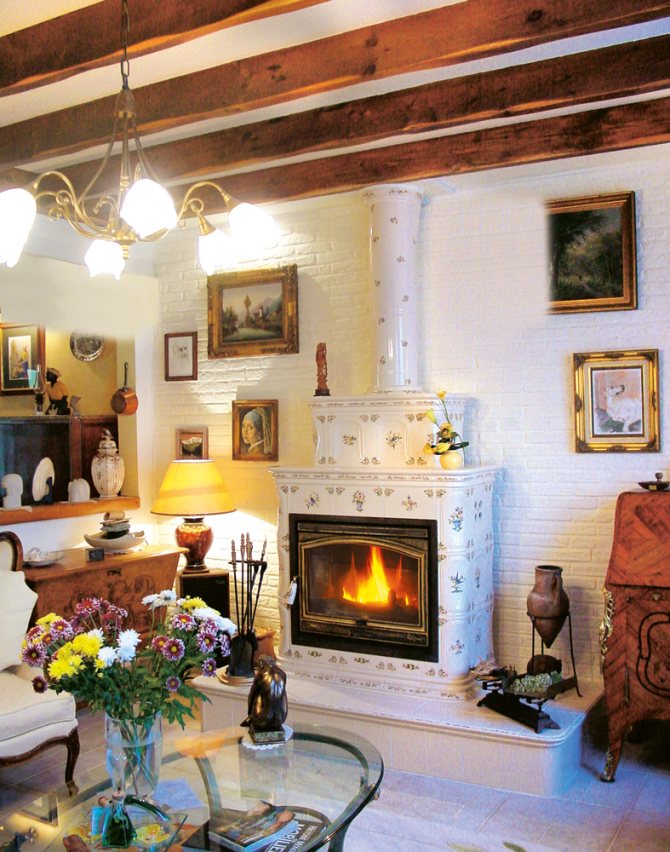
Tiled stoves and fireplaces are often equipped with a mounted ceramic chimney, which not only serves as an interior decoration, but also allows more efficient use of the heat from the appliance. Photo: Godin
Pottery pipes are glued with special silicate glue during installation. In this case, it is necessary to carefully remove excess working solution, especially from the inner surface of the channel, which must be perfectly smooth, otherwise the pipe will quickly become clogged with soot. The concrete casing modules are laid on cement glue. Since the height of the elements is low, it is necessary to constantly monitor the verticality of the chimney using a plumb line or a laser level.
The fire-prevention distance from the inner walls of the pipe to unprotected wooden structures must be at least 500 mm; up to closed with a heat-insulating screen (mineral wool + steel) - 380 mm.
Finally, it is very important to correctly select and carefully install the head, consisting of a cover plate (usually concrete) and a metal deflector umbrella. The plate must seal tightly the gap between the working channel and the casing. After all, if the insulation in the upper part of the pipe becomes damp, the draft will deteriorate sharply (it may even overturn) and the amount of condensate will increase. An improperly manufactured baffle can also cause traction problems. In this regard, it is better to purchase a head from the manufacturer of the chimney, even if it will cost more than one made on site or ordered from a third-party workshop.
When laying the chimney from ceramic modules, a frame casing can be assembled. Its base is made of galvanized steel profiles. Photo: "Motive Force"
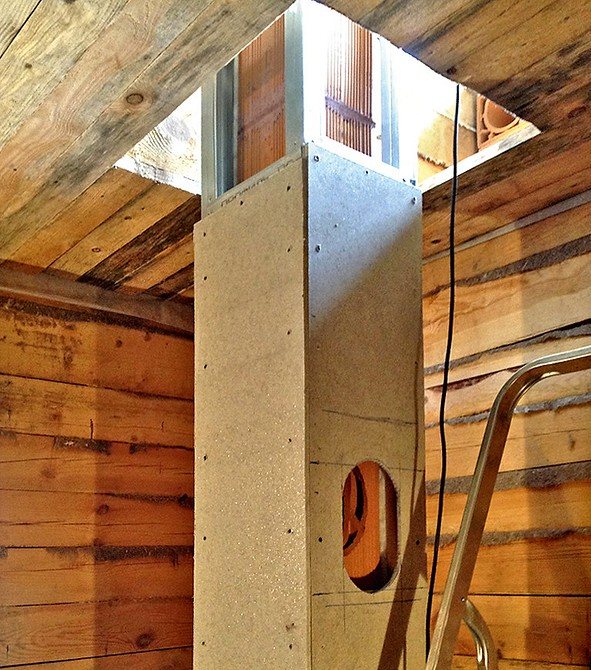

For cladding, non-combustible sheet material is used (flammability class NG), for example, glass-cement sheets
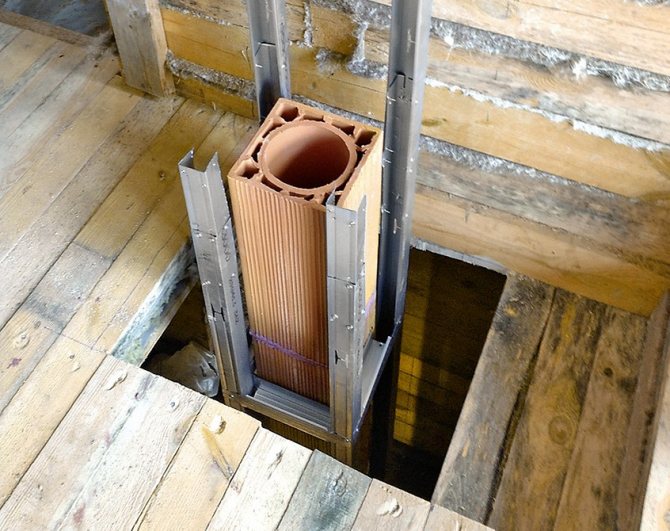

When passing overlappings, observe safe distances from wooden beams and floorings
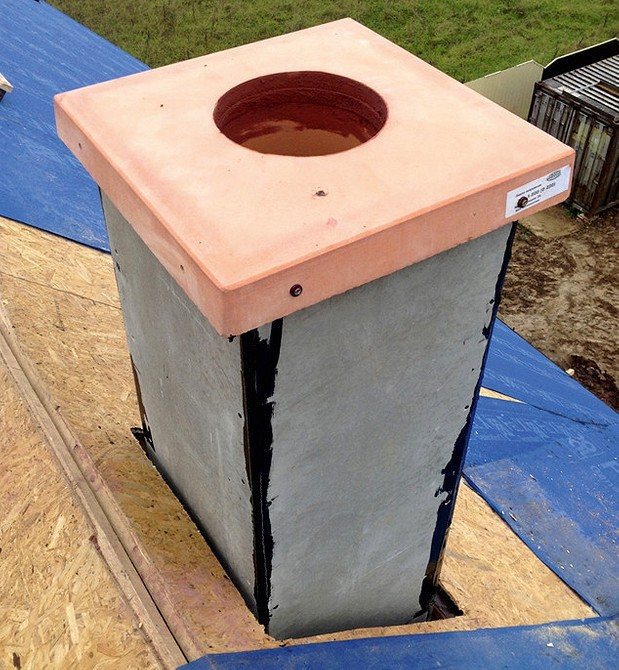

The pipe head is formed using a ceramic cover plate, on which a steel deflector umbrella is mounted
Why ceramics are better than bricks
For centuries, the chimney was built of bricks plastered with clay mortar. Why have ceramic pipes been so popular in recent years? The answer is simple: in terms of its characteristics, a ceramic chimney pipe is much superior to a brick. The ceramic chimney has the following advantages:
- Good traction. Unlike brick, which has a rough surface, ceramic pipes are coated with heat-resistant glaze from the inside. The smooth surface contributes to better draft, so owners of stoves with a ceramic chimney do not have problems with smoke at home when burning.
- Strength. The glaze has a low water permeability, so the pipe does not absorb water, and all condensate, as well as moisture from precipitation, drain into a specially designed sump. Traditional brick pipes, when moisture settles on a porous brick surface, absorb it, which at low outside temperatures leads to freezing of water and cracking of bricks and masonry mortar.
- Resistant to soot formation. Soot practically does not settle on a smooth surface, and most of it escapes into the atmosphere along with the smoke.On the brick, the formation of soot occurs much faster, while the clearance decreases and the probability of its ignition appears, which threatens a fire. Even if soot settles on ceramic pipes, it can be easily cleaned by mechanical or chemical methods.
- Fire safety. Ignition of soot in a ceramic pipe is unlikely, but even if this happens, a fire will not occur - the inner coating of the pipe has the necessary heat resistance for this, and its outer walls practically do not heat up due to low thermal conductivity.
- Resistance to chemically aggressive substances. Smoke contains compounds of sulfur and nitrogen, which when interacting with water - condensate or precipitation - form acids. It is because of them that brick and metal chimneys are destroyed. Glazed ceramics do not have this drawback - they do not interact with acids.
- Ease of installation. To lay a brick chimney with your own hands, you need knowledge, experience and time. Everyone can install a ceramic pipe, just carefully study the instructions. Ceramics are easy to process, can be cut, drilled, polished, installed using a conventional tool within one to two days.
Ceramic pipes are not devoid of mandatory requirements that complicate their installation - this is a rather large weight compared to stainless steel pipes and the need for a foundation. However, if we take into account their warranty period of operation from 30 to 40 years, this feature is insignificant.
How is the chimney arranged?
Elements of a traditional brick pipe: neck for connecting to the furnace, valves, riser, otter, neck, headband. All other types of pipes to some extent repeat this design. A deflector must be installed on top of the chimney.
Ceramic and metal sandwiches are assembled from ready-made blocks. Ceramic pipes consist of an inner ceramic pipe, an outer concrete frame of expanded clay concrete blocks, a layer of insulation between them.
There are also ready-made modules with additional functions: for cleaning, tees, with tanks for collecting condensate.
Principle of operation
When the fuel burns, the combustion products heat up, the gases expand when heated, their density decreases, they rise up the pipe and air is sucked into the furnace. The thrust is temperature dependent - the hotter the gases, the greater the thrust.
The phenomenon of gas expansion with increasing temperature is the basis of the principle of operation of the gas outlet pipe.
Advantages and disadvantages of ceramic chimneys
Ceramic sandwich chimneys attract consumers with their ability to remove combustion products of various temperatures from 200 ° C to 1000 ° C. They are suitable for solid and liquid fuel boilers and have other positive properties:
- fire safety;
- resistance to aggressive environments;
- gas and water tightness;
- sufficient strength;
- resistance to temperature extremes and humidity;
- ability to be machined;
- manufacturability.
In general, ceramic chimneys are versatile. But you cannot call them ideal because of their massiveness. Therefore, you have to build a foundation, which increases financial costs.
And yet ceramics and chimneys from it remain the best. This is not only due to their aesthetics and design. The superiority here is obvious. The secret lies in the environmental friendliness, safety and long service life of the system.
The service life of such a chimney
According to various sources, the service life of such a structure is up to 30-40 years. This is the most durable type of chimney.
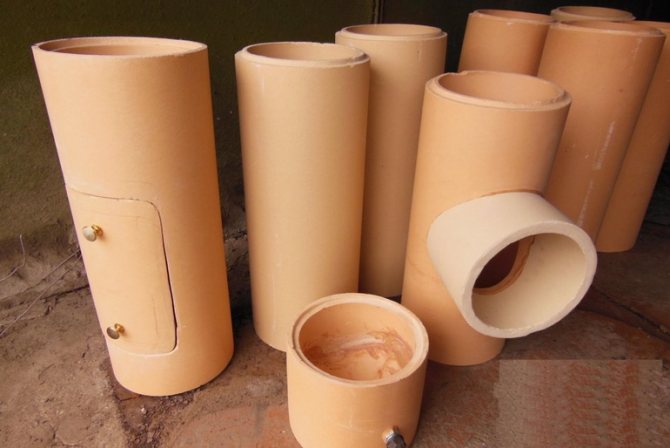

And do not remember the "eternal" pipes of stoves: the efficiency of modern boilers and fireplaces is much higher than traditional stoves, the fuel burns completely or almost completely, and the exhaust gases contain everything that previously remained in the ash.In particular, nitrogen and sulfur enter them, which, when interacting with water vapor, form acids and destroy the brick. A traditional pipe with a modern boiler will not last even 20 years.
Rules for choosing chimney parameters
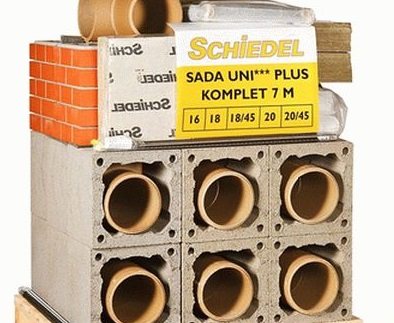

The pipe of the ceramic chimney is made of separate blocks, which fit well to each other, therefore, no smoke leaks appear. Its height is calculated in advance, in accordance with current regulations. Excessive chimney length will not improve draft, but will only create complex aerodynamic eddies that do not contribute to the efficient operation of the gas exhaust system. The pipe is recruited, guided by the rules:
- height above a flat roof 50 cm;
- a pipe located 1.5 m from the ridge must rise 50 cm above it;
- at a distance of up to three meters, the edge of the chimney cannot be below the ridge line;
- being more than 3 m from the ridge, the pipe must reach the axis 10 degrees from the line of its horizon;
- the diameter of the inner ceramic channel cannot be less than that of the flue pipe;
- the height of the pipe from the grate line to the outer edge is not less than five meters.
The ceramic chimney can be used to evacuate gases from several devices, but in any configuration, the lower module helps to collect condensate. Chimney elements are selected based on the type of heating device: fireplace, boiler or stove. The size of the pipe diameter is influenced by the power of the boiler and the type of fuel. To calculate the required length of a ceramic chimney, you will need roof heights and the value of the ceilings.
What is a chimney and what is it for
Any heating unit that burns fuel requires the removal of hot gases. To do this, any stove, fireplace, boiler of heating systems must have a chimney - a vertically located pipe that removes hot combustion products outside the building and insulates the building structure from hot gases.
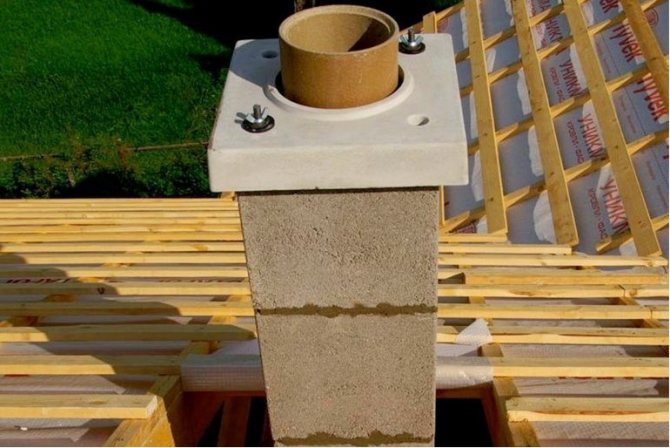

The safety of living in the house depends on how well it is made and correctly designed - both in terms of possible poisoning with carbon dioxide and carbon monoxide, and in terms of the possibility of a fire.
Step-by-step instructions for installing a ceramic chimney
Draw up a preliminary work plan, decide on the exact places of the boiler pipe entry, installation of revisions, gate, etc. Prepare the base for the structure, keep in mind that the weight of the chimney, depending on the manufacturer and height, may exceed 800 kg. Although the dimensions of the blocks are only 40 × 40 cm, this is a very high load per unit area. The base must be installed with these points in mind, and strictly comply with the requirements of building codes and regulations. Check the completeness of the components, make exits to the attic and roof. Prepare construction and measuring tools.
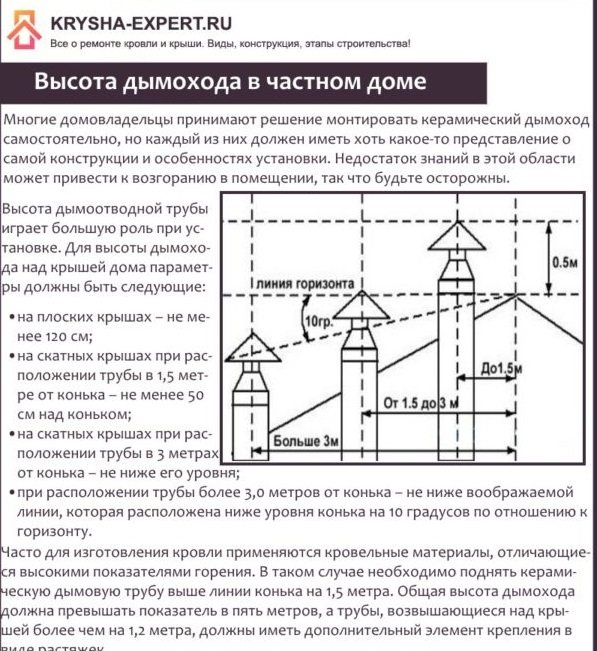

Chimney height in a private house
Important. The chimney should be installed for at least two days. Not because the work is complicated and time-consuming, but because it is necessary to give time for a part of the solution to solidify - the lower blocks must be securely fixed. Otherwise, there is a possibility of distortions, and this is a very unpleasant situation.
Installation of the lower part of the chimney
Step 1. Make a mortar for connecting concrete blocks. You should use special adhesives for ceramic tiles, ordinary cement-sand mortar is not recommended, since its strength and adhesion indicators do not meet the requirements of manufacturers of ceramic chimneys.
You don't need a lot of solution, it is recommended to cook no more than half a bucket. First, the amount of water required according to the instructions is poured into it, and then the dry component is added. It is easier to mix with a special mixer, it is sold in hardware stores and is used together with ordinary hand drills.
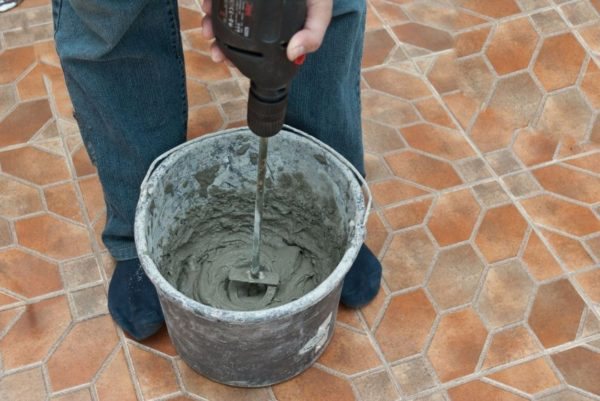

The solution is prepared in small portions
Step 2. Spread the mortar in a continuous layer on the base, but before that you need to mark out the dimensions of the blocks. Lay waterproofing on it, for this purpose it is better to use a traditional roofing material, level the base under the level. Remember that the stability of the chimney largely depends on this. It is possible to correct minor deviations from the vertical during the further laying of blocks, but an experienced builder will notice the difference in the thickness of the joints.


At the installation site of the chimney, a layer of solution is applied and a cut-to-size roofing material is laid
Step 3. Using a grinder and a diamond-coated disc in the first block, cut a hole for the condensate drain pipe. Customize the standard ceramic tube to your individual dimensions. Measure the height and cut off any excess. You should also work with a grinder with a diamond disc.
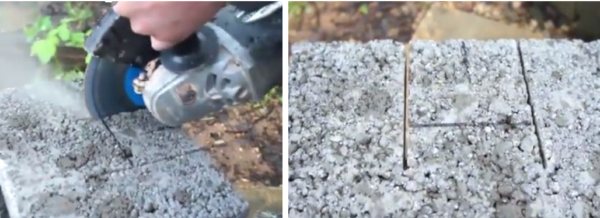

In the first block, holes are cut with a grinder
Step 4. Apply an even layer of glue to the first block and place it on the previously prepared base. Using a spirit level, check the position of the planes in at least two directions. Adjust the blocks by tapping lightly if necessary.
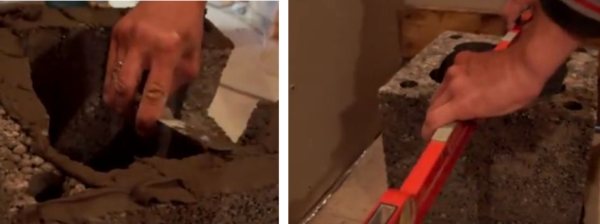

They put a block and check the location by level
Step 5. Replace the condensate trap. Check that its plane is strictly horizontal.


A condensate collector is installed inside the unit.
Practical advice. There is no need to hope that ceramic blocks will automatically correct the position of ceramic pipes and only control their laying. Experienced craftsmen always check every element of the chimney design, only this technology guarantees high-quality work on the assembly of a ceramic chimney.
Step 6. Pre-cut a hole in the block for the revision door. Spread mortar around the edges and replace the second block. Check its position with a water level.


Mount the second block with a cut hole
Step 7. Apply sealant to the condensate collector around the perimeter, it is sold complete with a chimney, it is not afraid of high temperatures and exposure to aggressive chemical compounds. Wrap the revision tee with insulation and insert it. To prevent the condensate drain hole from clogging up with fallen glue, temporarily cover it with a piece of special stone. At the end of the installation work, it is removed, the drain hole opens.
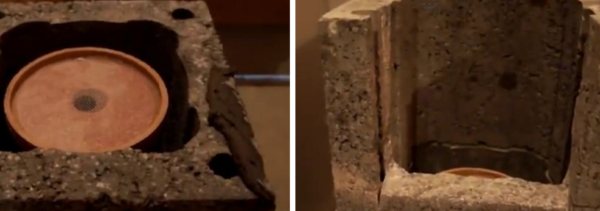

Apply sealant, attach a tee with insulation on top
Install the next pre-drilled block. Next, mount the blocks and ceramic pipes until the structure reaches the height of the boiler chimney connection. Constantly check the spatial position of each block, do not forget to lubricate the joints of ceramic pipes with sealant, put on heat protection.
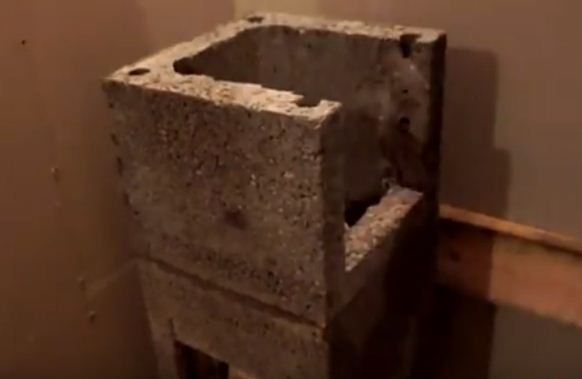

The rest of the blocks are installed in the same way.
Installing a tee under the pipe
The tee under the pipe is mounted as follows.
Step 1. Using a grinder, cut a hole in the blocks for the flange. Its dimensions are the same as for the revision. Cut carefully to avoid cracking the blocks. If a crack appears, then the element will have to be thrown away and replaced with a new one.
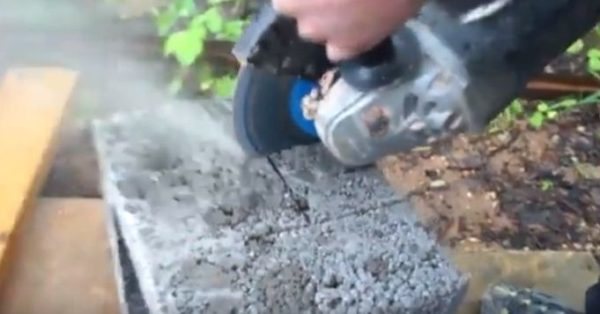

Carefully cut a hole in the block for the flange
Step 2. Put the block on the glue, install the consumer connection tee. Apply a layer of mortar and place the next concrete block.
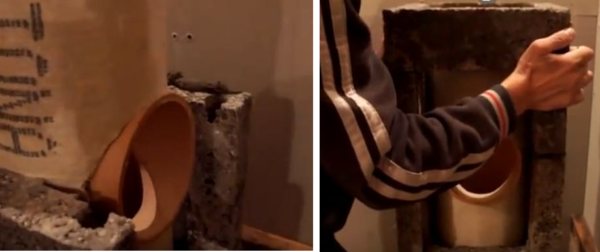

Install a tee and close it with the next block
Then only straight ceramic pipes and whole blocks are used. The work must be continued until the chimney comes out onto the roof. If you plan to install a gate, then you should first make a small hole in the block.
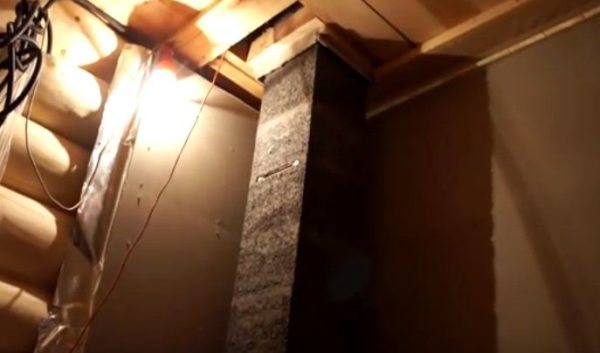

Blocks and parts of the pipe are mounted before reaching the roof
Important. The gate is installed only on solid fuel boilers; installation of these devices on gas is strictly prohibited.
Installation of the final part of the ceramic chimney
The final part is called the installation of elements located above the roof slope. They have an imitation of natural ceramic bricks. The height of the chimney above the roof depends on the distance to the ridge, the parameters are regulated by building codes and regulations.
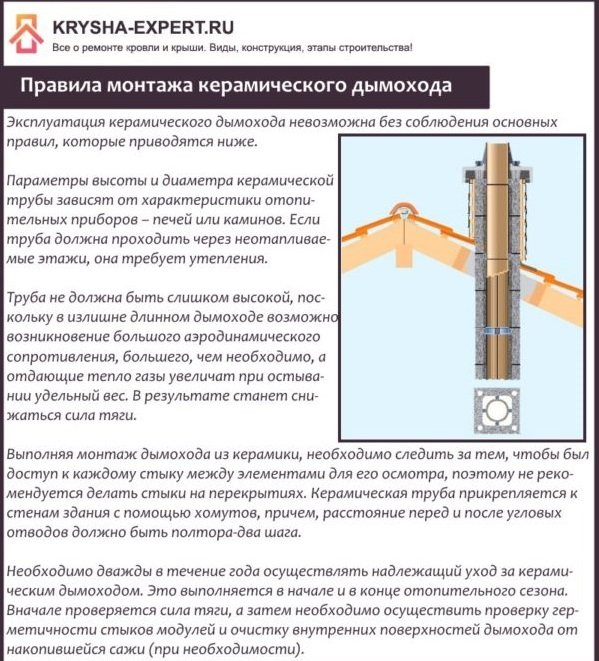

Ceramic chimney installation rules
Step 1. Lay blocks on the mortar, then ceramic pipes with insulation according to the above technology. The height of one final block is 7.5 cm. This is due to the fact that the blocks imitate bricks with such dimensions.
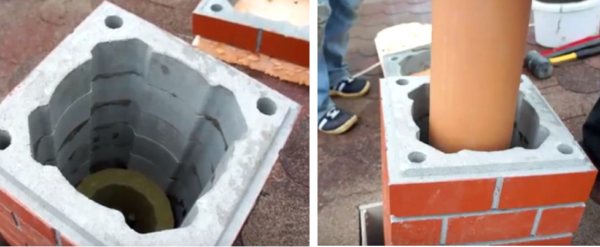

Blocks imitating brickwork are installed on the roof.
Step 2. Place a metal sheet with a through hole on the last block. It is attached with glue.
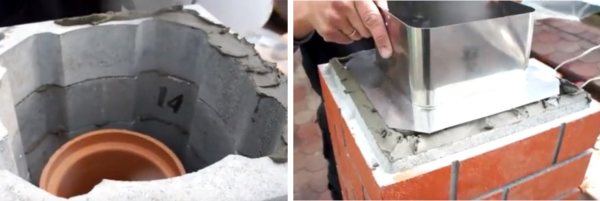

At the top of the chimney, a metal sheet with a hole is attached to the glue
Step 3. Press down the metal sheet with the cover plate, check its position.
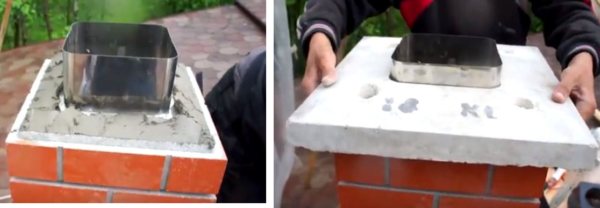

After leveling the sheet, place the cover plate
Step 4. Insert metal pins into special technological holes; in the future, the chimney umbrella will be screwed to them.


Studs are inserted into the holes on the plate
Step 5. Place the final piece of ceramic pipe and fit the cone firmly onto it.
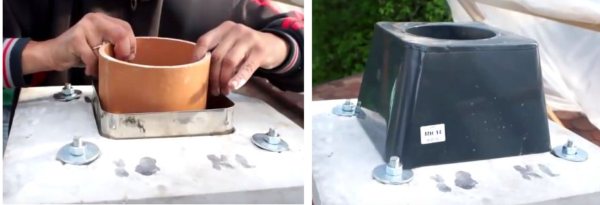

The final step is to install the cone on the pipe
The chimney is installed, you can close up the penetration in the roof and seal the exit point. For these purposes, it is recommended to use soft bitumen based compactors. Pay attention to the quality and technology of mounting the seals, leaks often appear at the junction points.
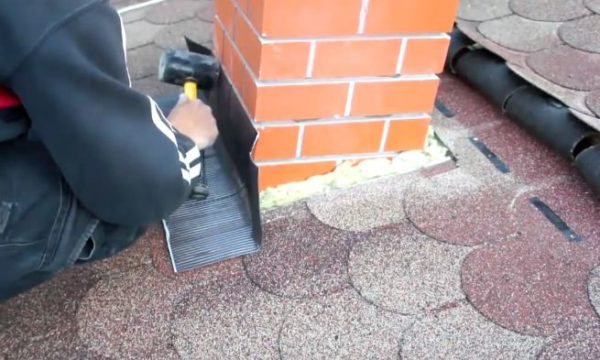

After installing the pipe, it is necessary to carefully seal all joints
Chimney execution methods
02/19/2016 1198 Pechnik (Moscow)
Content:
1. Modern heater 2. Brick chimney 3. Chimney from prefabricated blocks 4. Chimney from steel 5. Requirements for chimneys
Modern heater
Each heating device, be it a fireplace, stove or boiler, which necessarily has a fuel chamber, must be connected to the chimney system. It is the correct choice of the chimney design that will guarantee further safety and full-fledged operation of the entire hearth. When choosing a device, it is important to pay attention to the dimensions of the firebox, as well as the fuel that you are expected to use.
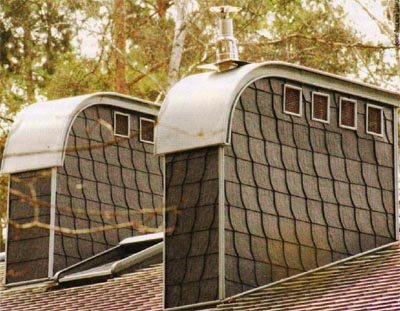

Let's make a reservation about how the heating boiler is installed in the building. The type of boiler should be determined even before the start of construction work. The installation of one or another version of traditional hearths is also taken into account - it will be washed by a fireplace, or maybe a stove.
First, you should choose a place for the future heating device, this will help subsequently to correctly bring the chimney out into the street. Be careful! Any heating device must be connected to an independent chimney. You should also provide for a ventilation duct in the heated room.
What are chimneys made of today?
Nowadays, ready-made ceramic chimneys of factory production, made of clinker, chamotte or ceramics, are very famous. However, there are cases when only brick structures are suitable for a particular building. Also, old houses already have brick chimneys, which it is enough to restore, and they will still serve faithfully to their owner. Such chimneys can be connected to gas boilers by installing steel liners inside the structure. Of course, there are cases when it is impossible to design a fireplace installation, then it is located outside, it will be a double-walled steel chimney.
Brick chimney
For the construction of brick chimneys or ventilation ducts, solid ceramic bricks are used. It could be the M75 / M50 brand.Some stove-makers advise using special concrete blocks in which there are rectangular or circular channels. The smallest cross-section of channels that are laid out of bricks is traditionally 14 by 14 centimeters. As is well known in furnace construction, it is fourteen centimeters that make up half of a brick with seams.
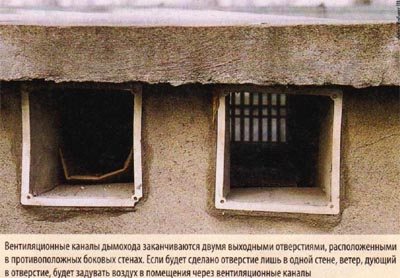

If the size of the channels exceeds five meters, then the parameters are also increased to 14 x 20 centimeters or to a diameter of at least eighteen centimeters.
In order to prevent cooling of the smoke channels, they are laid inside the walls of the house. When planning a chimney system, you need to try to make them as large as possible. For what? You will be able to save on the construction of a heating device, since the smoke and ventilation ducts are heated at the expense of each other.
The brick chimney is being built at the same time as the dwelling itself. The principle of this design is based on certain knowledge that is applicable to both flue and ventilation ducts. Usually the chimney is installed on a solid brick or reinforced foundation. In the latter case, the structure is reinforced. One way or another, the foundation is also designed by stove-makers in advance. In this case, the height of the base of any fireplace or stove should be at least thirty centimeters, and along the perimeter the structure should protrude to the sides by about fifteen centimeters. When performing the chimney as part of the outer wall, its lower part is performed at a certain level, so that it is below the freezing limit.
When laying out or installing chimneys, a gaze should be directed at their tightness. To obtain high-quality chimneys, several important rules must be followed. First, the bricks are laid with the obligatory bandaging of the seams, that is, so that, as a result, the bricks of adjacent vertical rows are overlapped by subsequent bricks. Masonry is carried out using a mortar on which the structure of the walls of the load-bearing walls of the house is laid, it can be a cement or cement-lime mortar. An almost ideal inner surface of the chimney is important. Based on this, the arrangement of the canals is accompanied by the use of special templates.
Vertical seams in each row must be covered with elements of the previous and next row. Bricks in the partitions between the smoke channels should be placed at one end in the outer walls perpendicular to the tangent. Between the channels, the thickness of the partitions should be observed, which should be approximately half the brick - twelve centimeters. experts allow to reduce them between the ventilation ducts by half. In some cases, the outer walls of the chimney are also made in half a brick, that is, twelve centimeters. In order to slowly cool the volatile gases, the outer part of the chimney is covered with a heat-insulating layer, this can be, for example, basalt wool. If one chimney structure is characterized by several channels, then they are placed in two rows, which will help reduce heat loss. The recommended width of a single-row chimney is at least thirty-eight centimeters. And the width of the two-row design reaches sixty-four centimeters.
The chimney should be finished with a special element - a concrete head, reinforced with metal rods for greater reliability. The edges of the head protrude about ten centimeters beyond the contour of the chimney. To remove combustion products in the head, holes are made exactly opposite the smoke channel or channel for removing volatile combustion products. The outlets of the ventilation ducts are located under the head itself, as a rule, in the side and opposite load-bearing walls of the building. Wind can be prevented in a similar way. Channel parameters must be no less than the size of the channel itself.
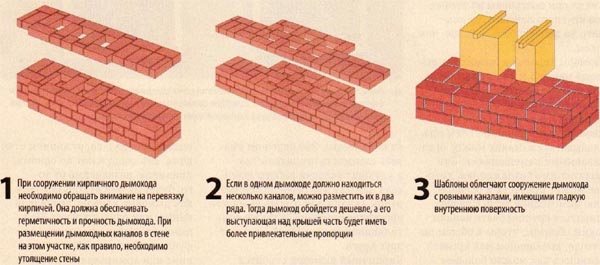

Brick chimneys have a certain popularity, as they are inexpensive and function well in symbiosis with fireplaces and solid fuel boilers. Structures of this type are characterized by an increased heat capacity, because they do not cool down for a long time after the operation of the heating device. As a result, a strong draft is formed in them, which contributes to the rapid ignition of fuel. The most serious problem is that you can simply make mistakes when building them. If you want to get the job done faster, then you can give preference to installing chimneys from ready-made blocks. It will be enough to assemble the device following the attached instructions.
Chimney from prefabricated blocks
Chimneys made of ready-made elements can be placed separately or attached to the inner or outer walls of the house. Usually, the chimney includes an internal ceramic or fireclay liner (made of acid-resistant material). Such a liner is installed in an external concrete block. If we are talking about external chimneys, then the composition includes an additional layer of insulation, which is installed between the liner and the outdoor unit. Inside the unit, special channels are provided that create air circulation around the insulating layer. Such a device is required to dry the insulation layer when necessary.
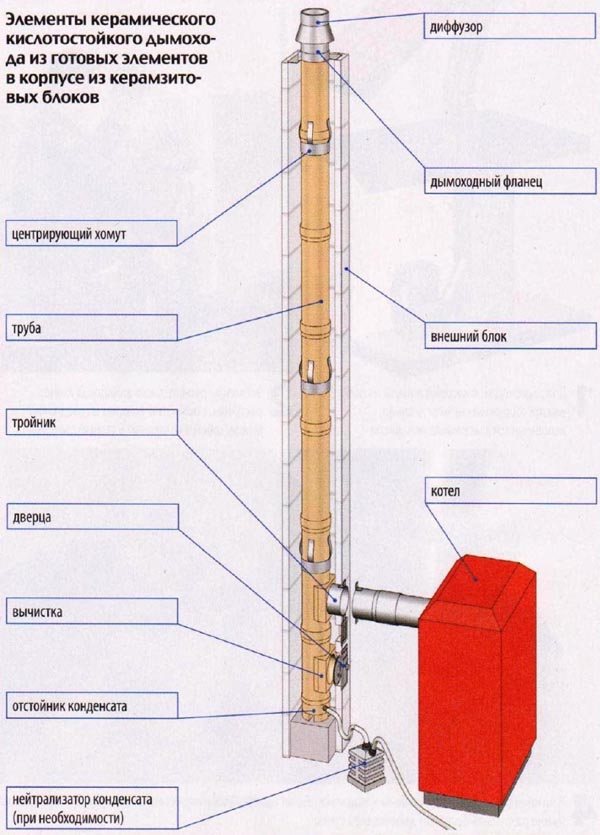

Ready-made chimneys are used either to remove volatile combustion products or to additionally install ventilation ducts. Ventilation in this case is made of special ceramic or expanded clay blocks.
If we are talking about solid fuel boilers equipped with a closed turbo chamber, which is used to supply air and remove combustion products, then special coaxial systems are used. The assembly of the chimney from ready-made blocks covers the connection of the elements of the inner liner to each other, based on laying a solution or acid-resistant putty. Finally, it is covered with an insulating layer, after which the outdoor unit is placed. We will say separately that the chimney set, in addition to ceramic pipes, includes a tee for connecting to a boiler, an inspection door, a condensate sump with a drain and a cap. External elements of chimneys are made in two versions: either it is a ceramic (silicate) device with one channel, or concrete multichannel blocks made of lightweight concrete. Some external blocks are bonded to each other using cement-lime mortar or adhesive mixture.
The main advantage of the ready-made components is considered to be small external parameters, due to which the chimney design takes up much less space.
The installation of a finished chimney also requires less time than building a brick type. It's all about the simplicity of the device used. Among other things, during the installation of a chimney from ready-made elements, there is much less opportunity for mistakes, since the structures are characterized by larger dimensions. Based on this feature, fewer of them are needed for the chimney than usual. In some cases, the chimney will represent part of the outer wall of the building, then wood beams and ceilings will rest on it. Then the chimney itself is difficult to make from ready-made blocks; it is more expedient to build a traditional brick version.
Steel chimney
Steel chimneys represent not only traditional, familiar to all liners mounted inside the chimney structure, but also free-standing independent structures. The devices are used to remove combustion products from gas and liquid fuel boilers. In some cases, they can be seen together with ordinary fireplaces and solid fuel boilers. In order not to get confused and install a suitable steel chimney, you need to carefully read the instructions and consider the special designations that are applied to each element.To perform double-walled steel chimneys, a pair of pipes is used, between which a heat-insulating layer is laid, the thickness of which must be at least three to five centimeters. For the production of the inner pipe, stainless or galvanized steel is used.
Today many designers use this type of steel for interior and exterior decoration. So, it turns out to add the function of operating chimneys - decorating the external facade of the building in a beautiful minimalist style. But, of course, the main task of using a steel chimney is still considered to be its utilitarian purpose, that is, the complete removal of combustion products into the atmosphere. You can easily install a chimney in an already residential building, for this it is equipped with sockets.
The chimney installation is distinguished by its simplicity and guaranteed subsequent reliability. Part of the structure is inserted into another and sealed with special gaskets and clamping clamps included in the kit.
Chimney requirements
Some developers simply ignore the requirements for the installation of chimneys that we prescribe, so we decided to once again remind these common truths.
- chimney channels must be strictly vertical, not have ledges dangerous in terms of removing gases. May have some deviations up to thirty degrees and a deviation of about one millimeter,
- the optimal chimney height is considered to be an indicator calculated from the fuel chamber to the exit above the roof of the building and is approximately four meters for a gas fuel chamber and five for a solid fuel furnace,
- the chimney should be properly routed above the roof. The standard indicators for the removal of pipes reach half a meter, in houses with a flat roof they also reach fifty centimeters for a solid fuel furnace, and for a gas fuel chamber they are two meters.
- the chimney should be led out about fifty centimeters above the roof ridge and at a distance of one and a half meters. If the chimney is located one and a half to three meters from the ridge, it is placed flush.
According to the requirements of regulatory documents, for the production of the chimney body, refractory materials are used that are able to withstand exposure to flame for one hour. It is important to keep track of the surface of the smoke channels, which should be smooth. The materials must ensure the tightness of the structure and must be approved for construction. To calculate the cross-section, take into account the power and type of the boiler.
The flue duct must not taper in length. For cleaning, use separate doors located at the bottom of the chimney. If you are installing a chimney for powerful boilers (at least thirty kilowatts), you can refuse the door, but provide an approach to the bottom of the device. If there are any vertical deviations, those parts that are made with a slope must be equipped with inspection holes. And in the lower part of the steel chimney, a condensate sump equipped with a drain is organized.
Featured video
Helpful installation tips
One of the main rules for installing ceramic chimneys: only whole elements are suitable for installation. The presence of chips, cracks or any other damage is unacceptable. Do not try to seal the damaged area with sealant or anything similar.
This is a dangerous solution, since damage hidden inside the structure can fail at any time and cause a fire.
Therefore, each element must be checked at the time of purchase, as well as immediately before installation. If even slight damage is found, a replacement should be made. The base for the adapter must be perfectly flat and horizontal.
To achieve this, experienced builders use a level, and the surface of the base is finished with some kind of even material, for example, tiles, porcelain stoneware, etc.
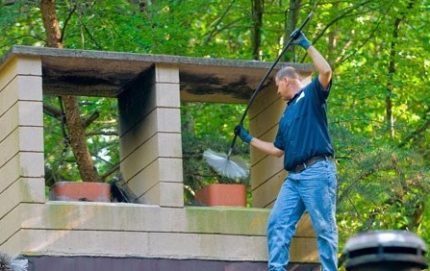

The ceramic chimney must be serviced regularly twice a year: inspected, cleaned of soot and check the draft level
Maintenance of this type of chimney is not difficult. It is necessary to check the presence of traction, clean the pipes from soot, control the integrity of all structural elements.
Usually, these operations are performed twice a year, but if there is reason to doubt the normal functioning of the chimney, maintenance activities can be performed unscheduled. Although with proper installation, problems with such structures practically do not arise.
Installation features
Step-by-step instructions for installing a ceramic chimney:
- the base for installing the pipe (foundation) must be perfectly flat - no distortions during installation are allowed; the top of the foundation is leveled with cement mortar;
- a special acid-resistant solution is used to seal the seams between the modules. Dilute it in accordance with the instructions on the package immediately before use, it is advisable not to knead the entire amount of the mixture at once - otherwise, during the assembly process, the solution will solidify;
- an external expanded clay concrete body is installed on the foundation;
- insulation and reinforcing elements are inserted into it; it is convenient to cut them into pieces of 1.5 m. if necessary, connect two reinforcing rods, they are simply inserted into the holes in the housing blocks with an overlap of at least 100 mm. The holes with reinforcing rods must be filled with cement mortar;
- the joints of the hull blocks are also fastened with cement mortar;
- a module with a condensate reservoir and a tube for its removal is installed;
- in the future, the elements of the pipe are mounted in the same order - housing, insulation, ceramics;
- if necessary, holes are cut in the expanded clay concrete elements with the help of a grinder;
- then a module with an inspection door or a tee for cleaning is mounted;
- then a tee is mounted to connect a boiler or fireplace;
- then pipes are mounted;
- excess solution should be wiped off with a wet sponge;
- when passing through the roof, the pipe is fastened using special clamps.
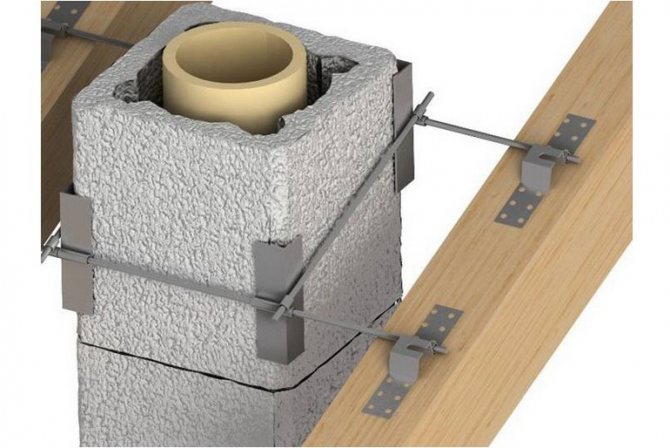

After the installation of all structures, decorative finishing of the external expanded clay concrete body and installation of the deflector are performed.
Ceramic pipe maintenance
Due to the peculiarities of ceramic pipes, their maintenance is much easier compared to brick ones. Once a year, it is necessary to clean them from soot mechanically or using special means. Twice a year, all joints are checked for cracks, chips, deformations and distortions. For each firebox, it is necessary to assess the draft, in case of its violation - to look for and eliminate the cause. You also need to monitor the cleanliness of the ventilation duct of the sandwich chimneys and drain excess condensate in time.
Ceramic chimney pipe is a reliable and technologically advanced way of removing combustion products from stoves and any boilers. Installation of such a chimney is expensive, but the long service life and excellent safety performance will more than justify your investment.
Making and installing a chimney with your own hands
It is impossible to make modern ceramic products for chimney pipes. You can do the installation yourself.
Drawing and diagrams
Before starting work, you must carefully measure all the dimensions, draw a diagram or drawing, decide what components you need.
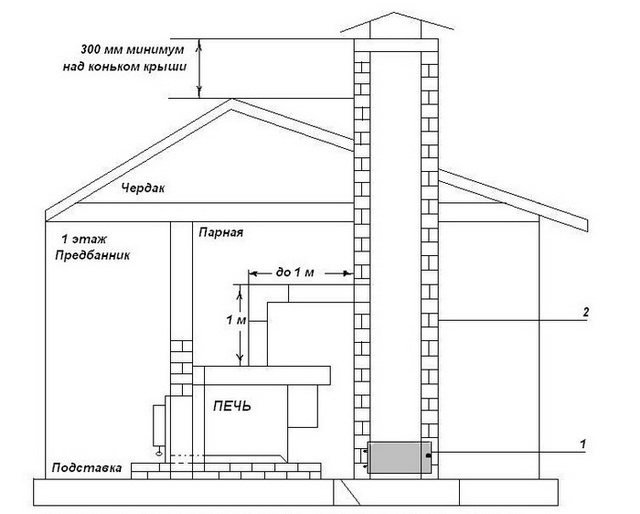

For convenience, when buying in a store, it is better to summarize the design results in a table and take it with you to the store.
Sizing calculation
The height of the pipe is determined in accordance with SNiP 41-01-2003 (see above). The diameter should correspond to the diameter of the outlet of the heating boiler of the unit.
Basic information
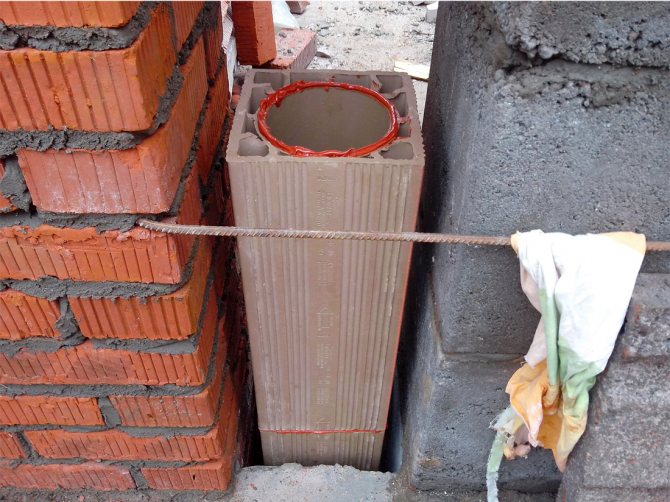

The ceramic chimney is a special device that consists of three layers.The pipe itself is completely separate elements with round sections, which are then inserted inside the expanded clay concrete products with square sections.
Special holes have been made in the outer elements. They are needed for laying fittings. All these elements are held together by mortar.
The space left between the indoor and outdoor units is filled with fireproof insulation. Basalt is most often used for these purposes.
Ceramic chimney systems are used in the following cases:
- if when installing a fireplace, it is not assumed that there are load-bearing elements on top;
- installation of products is allowed both outside and inside, but the height of the chimney should not be more than 4 m.

